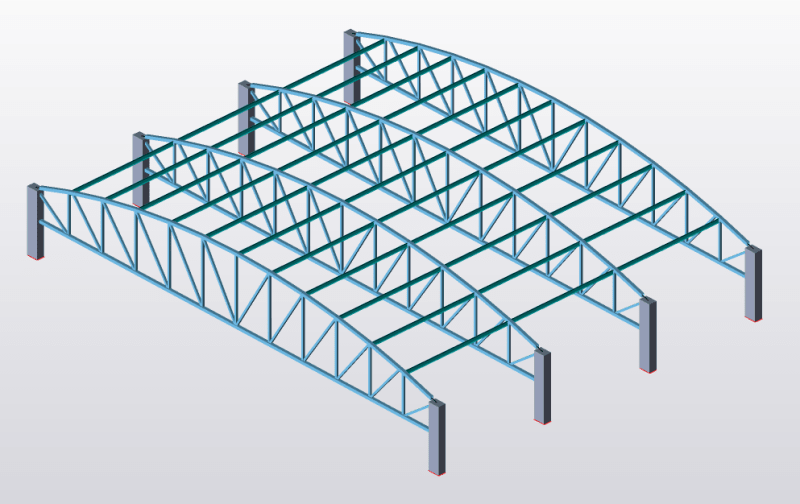struggle67
Structural
Hi
Do you guys do metal roof without plan bracings so called belt truss? Below picture is the model used for a software training I attended. Purlins are LTB restraint to truss. There was no problem with software analysis and design. But I am curious where do all the LTB restraint loads from purlins go without plan bracing? Is there any load path that I am not aware?

Do you guys do metal roof without plan bracings so called belt truss? Below picture is the model used for a software training I attended. Purlins are LTB restraint to truss. There was no problem with software analysis and design. But I am curious where do all the LTB restraint loads from purlins go without plan bracing? Is there any load path that I am not aware?


